当前位置:网站首页>[advanced C language] 8 written questions of pointer
[advanced C language] 8 written questions of pointer
2022-07-07 01:25:00 【Muxixi】
I'm Muxi Xi
List of articles

Written test questions of pointer
The meaning of array names :
- sizeof( Array name ), The array name here represents the entire array , It calculates the size of the entire array .
- & Array name , The array name here represents the entire array , It takes out the address of the entire array .
- In addition, all array names represent the address of the first element .
Written test question 1
#include<stdio.h>
int main()
{
int a[5] = {
1, 2, 3, 4, 5 };
int* ptr = (int*)(&a + 1);
printf("%d,%d", *(a + 1), *(ptr - 1));
return 0;
}
1.&a It takes out the address of the entire array ,&a+1 Is to skip a type of int(*)[5] Array of .
2.a Not alone sizeof Inside , And the array name a There is no address symbol in front , here a Represents the address of the first element .a+1 Skip a type of int The integer of , That is, the address of the second element .
3.ptr-1 Is to skip a type of int The integer of .
4.*(a+1)–>a[1];*(ptr-1)–>ptr[-1].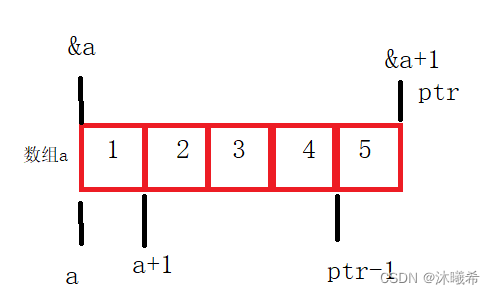
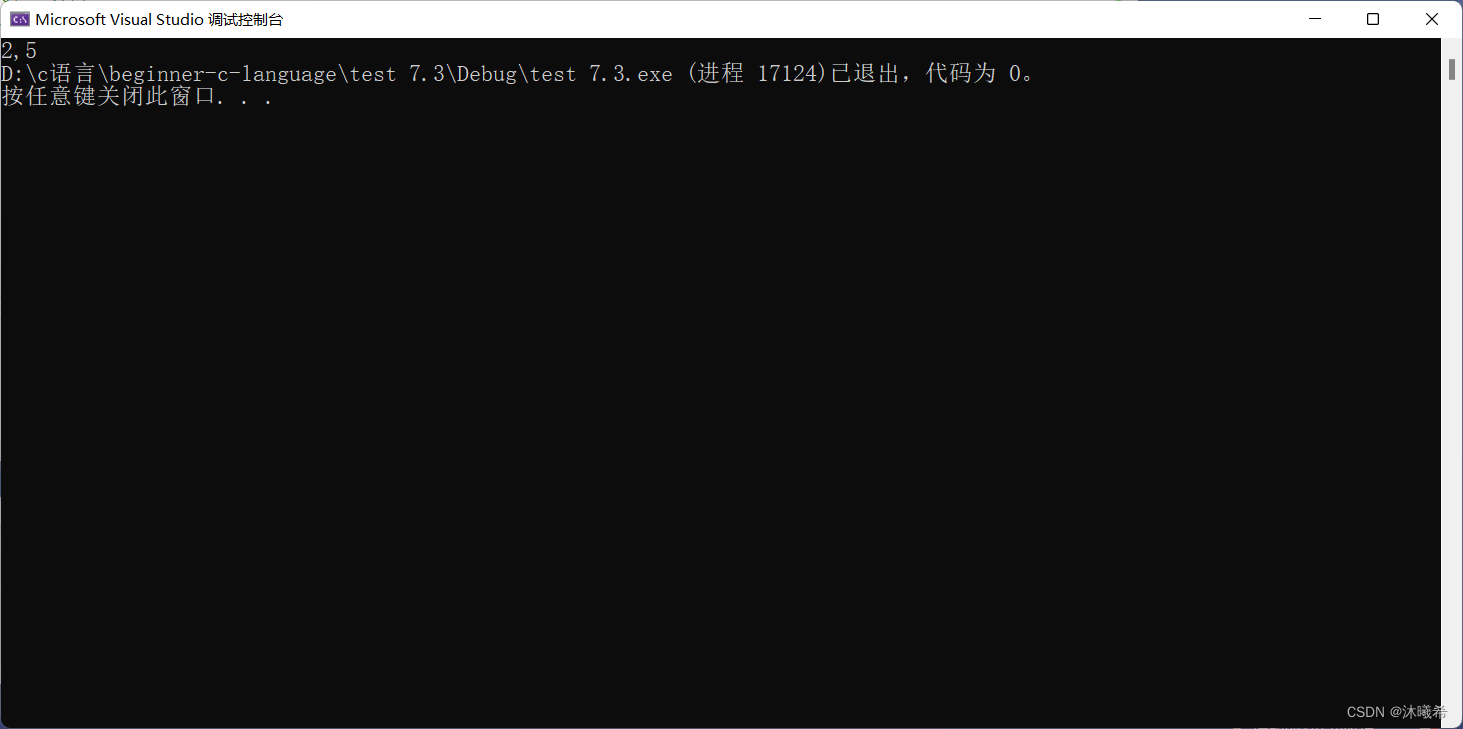
Question 2 of the written examination
struct Test
{
int Num;
char* pcName;
short sDate;
char cha[2];
short sBa[4];
}*p = (struct Test*)0x100000;
// hypothesis p The value of is 0x100000. What are the values of the expressions in the following table ?
// It is known that , Structure Test The variable size of type is 20 Bytes
//86 In the environment
int main()
{
printf("%p\n", p + 0x1);//0x100000+20-->0x100014
//p+1 Indicates skipping a structure , The size of a structure is 20 Bytes
printf("%p\n", (unsigned long)p + 0x1);
//0x100000+1-->0x100001
printf("%p\n", (unsigned int*)p + 0x1);//0x100000+4-->0x100004
p+1 Indicates skipping a type of unsigned int The integer of , Four bytes
return 0;
}
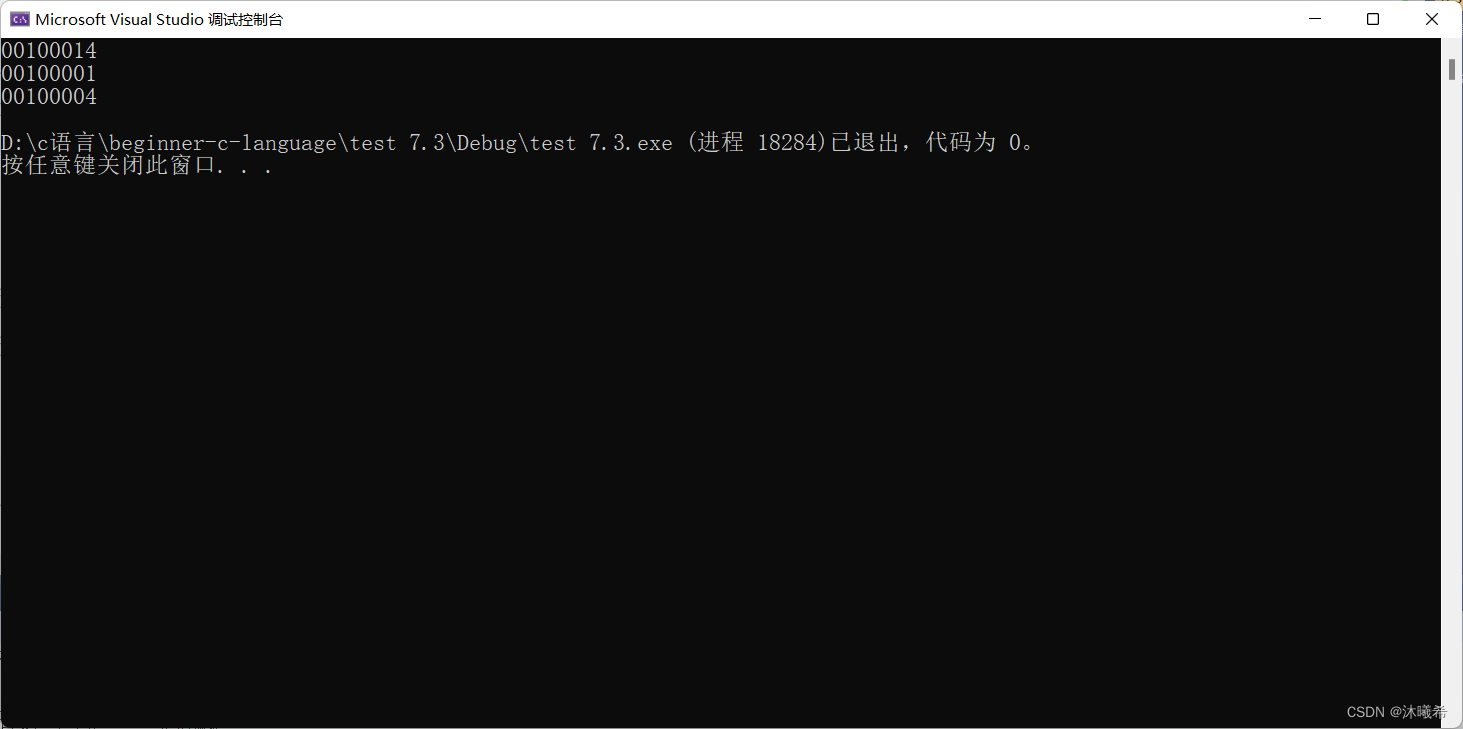
Written test question 3
#include<stdio.h>
int main()
{
int a[4] = {
1, 2, 3, 4 };
int* ptr1 = (int*)(&a + 1);
int* ptr2 = (int*)((int)a + 1);
printf("%x,%x", ptr1[-1], *ptr2);
return 0;
}
1.ptr[-1] amount to *(ptr-1)
2.&a It takes out the address of the entire array ,&a+1 Is to skip a type of int(*)[4] Array of .
3.a Not alone sizeof Inside , And the array name a There is no address symbol in front , here a Represents the address of the first element .a Forced type conversion to int,a+1 Add integers , Then forcibly convert it into a pointer , Skipped a byte , One int The type size is 4 Bytes , The data is stored in the small end , Therefore, by pointing 01 The pointer to , Yes 00. and prt2 The access right of is to access 4 Bytes , so ptr2 What I visited was 0x02000000.
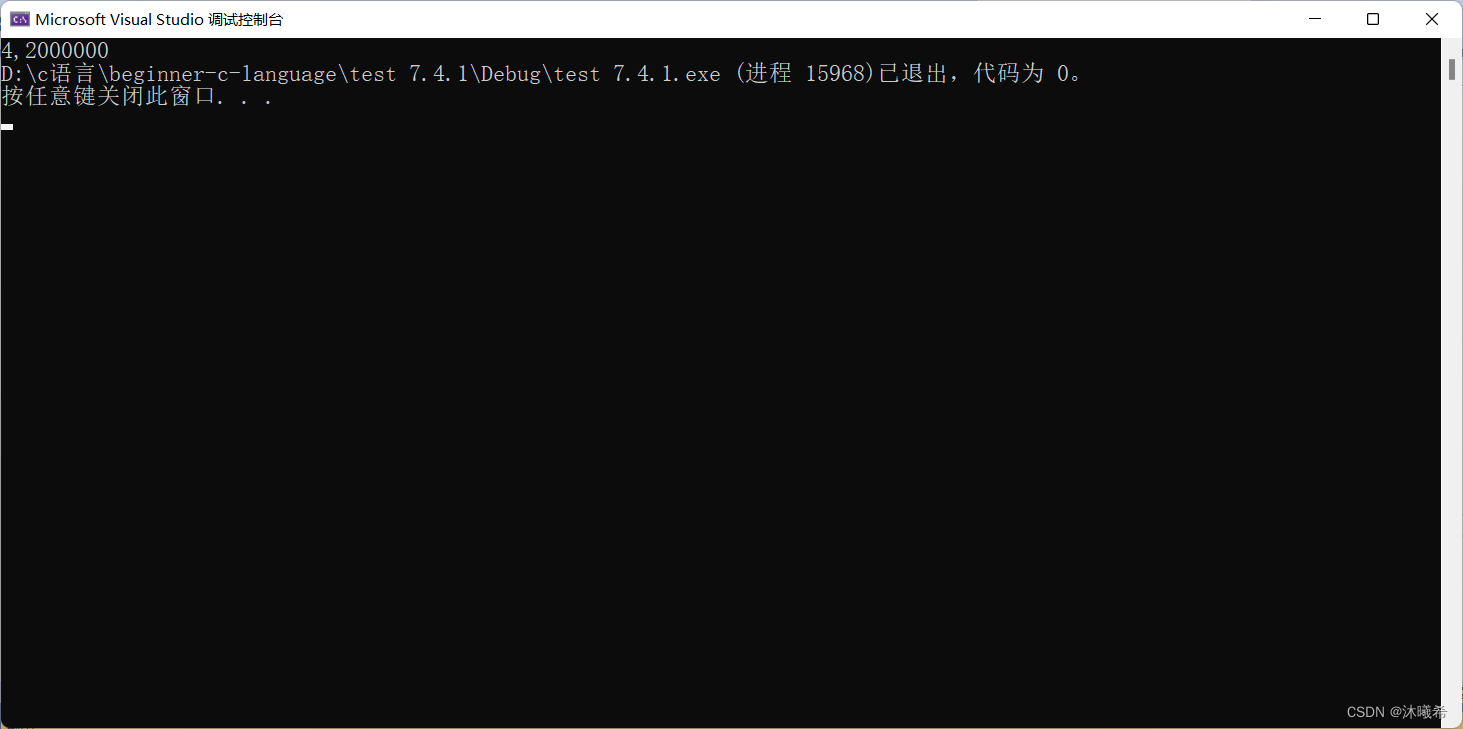
Written test question 4
#include <stdio.h>
int main()
{
int a[3][2] = {
(0, 1), (2, 3), (4, 5) };
int* p;
p = a[0];
printf("%d", p[0]);
return 0;
}
because int a[3][2] = {(0,1),(2,3),(4,5)} It's a comma expression .
Comma expression , Is multiple expressions separated by commas .
Comma expression , From left to right . The result of the entire expression is the result of the last expression .
so int a[3][2] ={1,3,5};
a[0] Is the array name in the first row ,a[0] Represents the address of the first element , namely a[0][0] The address of ,&a[0][0].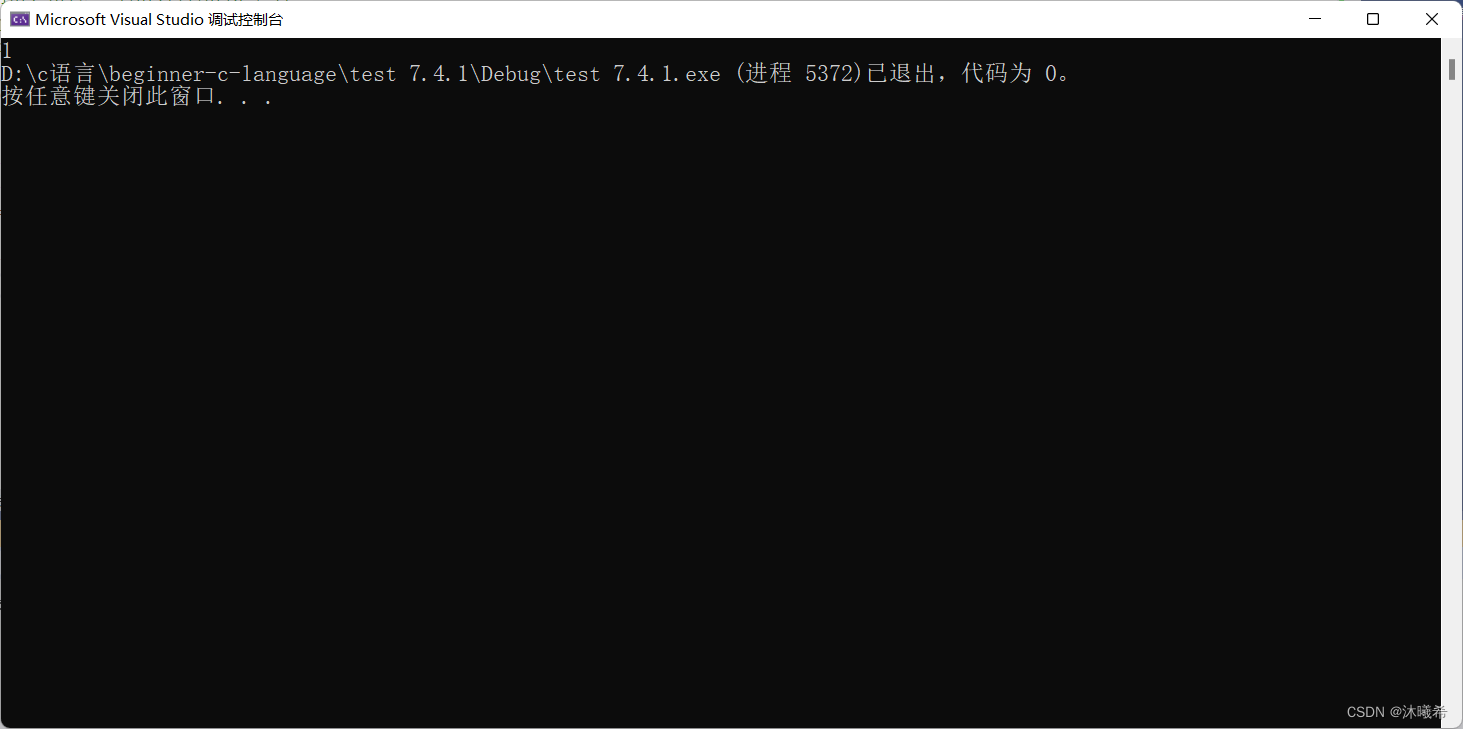
Written test question five
#include<stdio.h>
int main()
{
int a[5][5];
int(*p)[4];
p = a;
printf("%p,%d\n", &p[4][2] - &a[4][2], &p[4][2] - &a[4][2]);
return 0;
}
1.p[4][2] amount to *(*(p+4)+2).
2. The two hands subtract , The result is the number of elements between two pointers .
3.%p What is printed directly is the complement , Addresses are considered unsigned integers .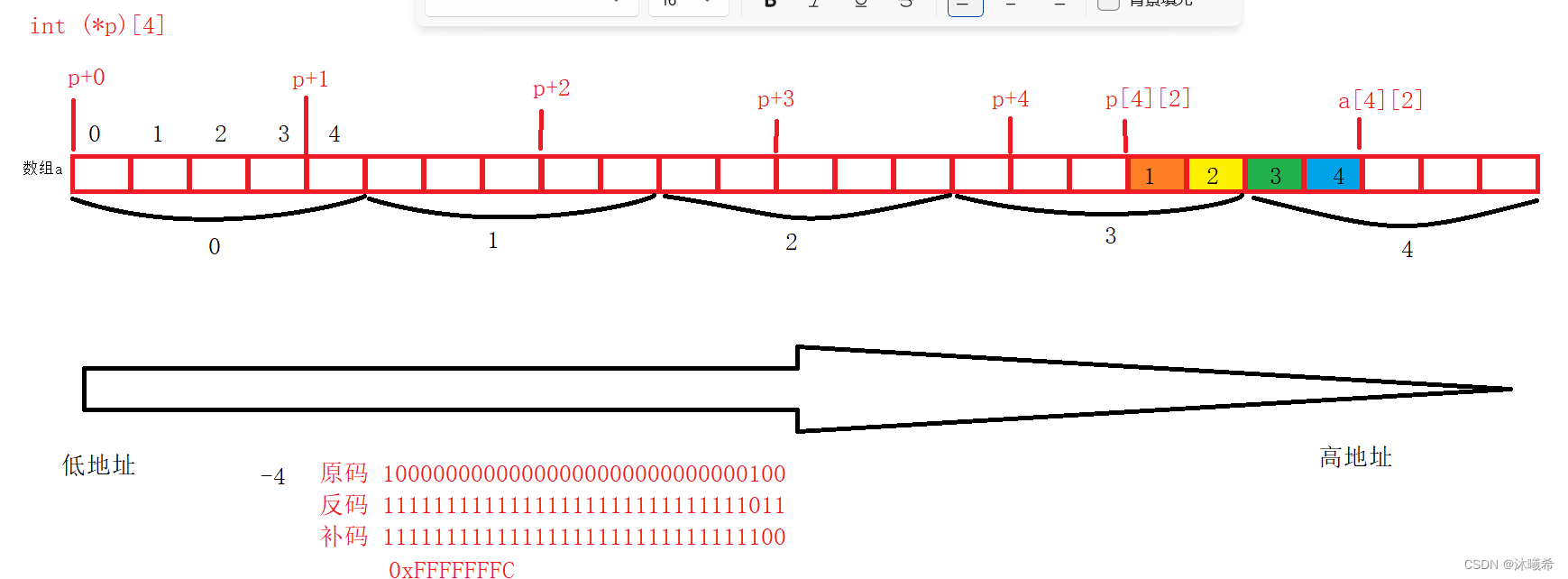
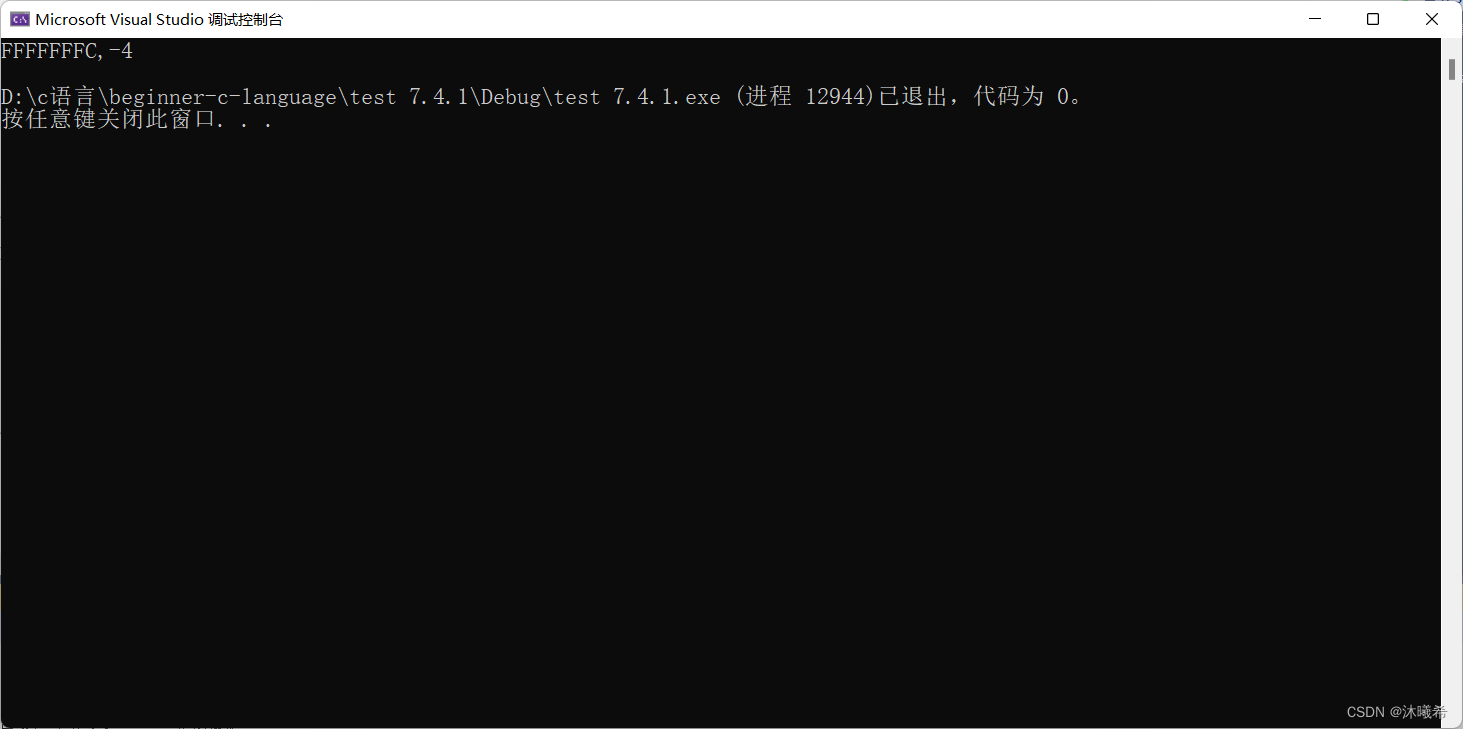
Written test question six
#include<stdio.h>
int main()
{
int aa[2][5] = {
1, 2, 3, 4, 5, 6, 7, 8, 9, 10 };
int* ptr1 = (int*)(&aa + 1);
int* ptr2 = (int*)(*(aa + 1));
printf("%d,%d", *(ptr1 - 1), *(ptr2 - 1));
return 0;
}
1.*(aa+1) amount to aa[1], Represents the array name of the second row .
2.&aa It takes out the address of the entire array ,&aa+1 Is to skip a type of int(*)[2][5] Array of .
3.aa Not alone sizeof Inside , And the array name aa There is no address symbol in front , here aa Represents the array name of the first row ,aa+1 Represents the array name of the second row .


Written test question 7
#include <stdio.h>
int main()
{
char* a[] = {
"work","at","alibaba" };
char** pa = a;
pa++;
printf("%s\n", *pa);
return 0;
}
pa++ Is to skip a type of char* The pointer to .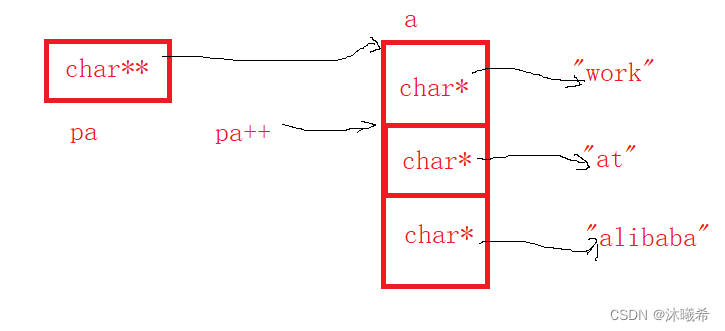
Written test question 8
#include<stdio.h>
int main()
{
char* c[] = {
"ENTER","NEW","POINT","FIRST" };
char** cp[] = {
c + 3,c + 2,c + 1,c };
char*** cpp = cp;
printf("%s\n", **++cpp);
printf("%s\n", *-- * ++cpp + 3);
printf("%s\n", *cpp[-2] + 3);
printf("%s\n", cpp[-1][-1] + 1);
return 0;
}
1.*cpp[-2] amount to *(*(cpp-2)).
2.cpp[-1][-1] amount to *(*(cpp-1)-1)
printf(“%s\n”, **++cpp); The result is :
printf(“%s\n”, *-- * ++cpp + 3); The result is :
printf(“%s\n”, *cpp[-2] + 3); The result is :
printf(“%s\n”, cpp[-1][-1] + 1); The result is :
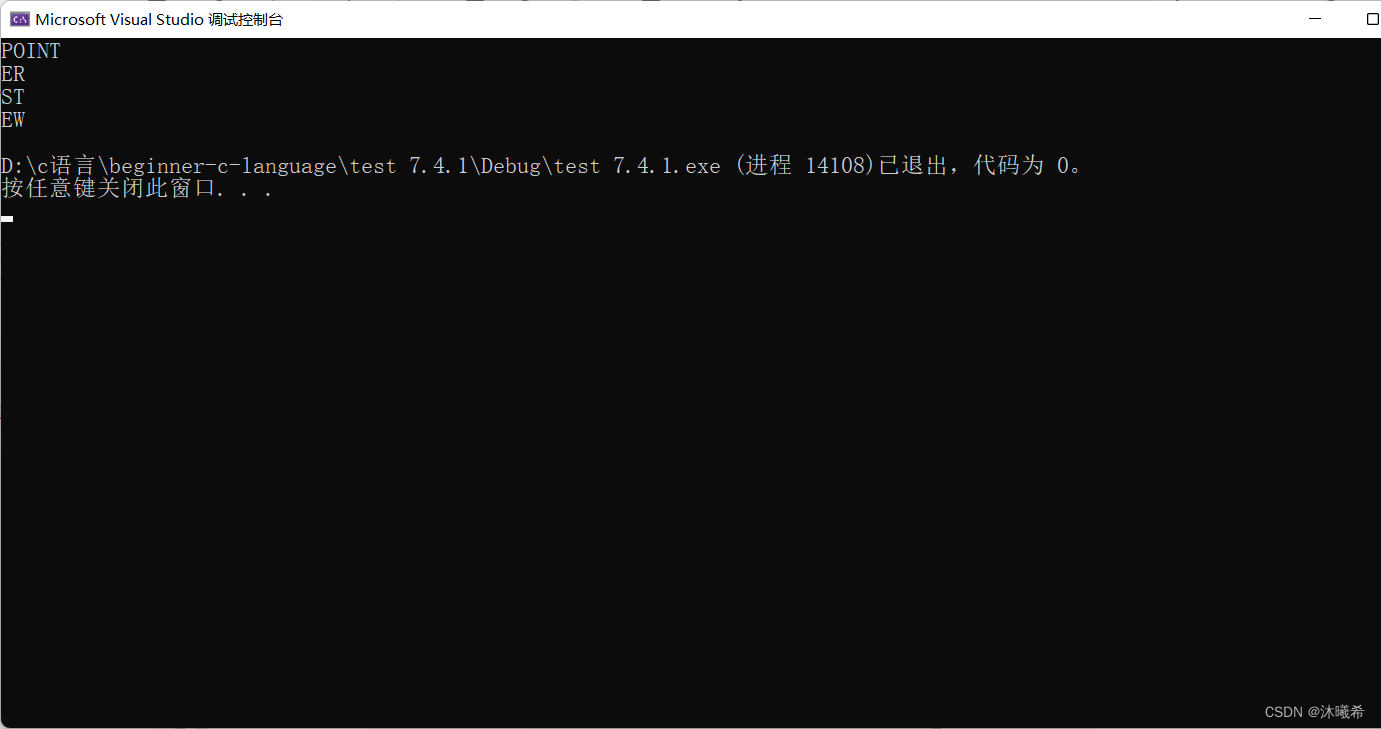
At the end

Then the notes of pointer pen test questions are over here , What doubts or feelings are wrong , Leave a comment in the comments section .
But the road ahead , Not to lose time !
边栏推荐
- How to prevent overfitting in cross validation
- Implementation principle of waitgroup in golang
- Metauniverse urban legend 02: metaphor of the number one player
- 安利一波C2工具
- Neon Optimization: an optimization case of log10 function
- 1123. 最深叶节点的最近公共祖先
- docker 方法安装mysql
- 机器学习:随机梯度下降(SGD)与梯度下降(GD)的区别与代码实现。
- Transformation transformation operator
- ARM裸板调试之JTAG原理
猜你喜欢

让我们,从头到尾,通透网络I/O模型
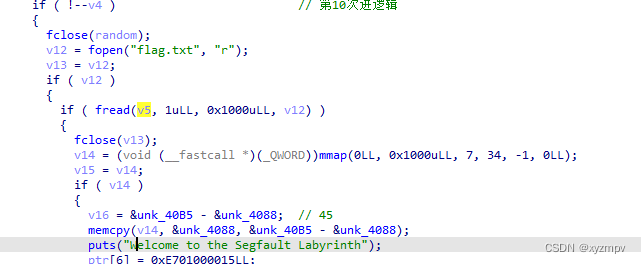
2022 Google CTF segfault Labyrinth WP
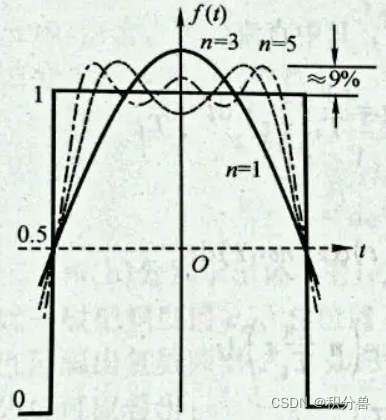
【信号与系统】

JTAG debugging experience of arm bare board debugging

UI control telerik UI for WinForms new theme - vs2022 heuristic theme
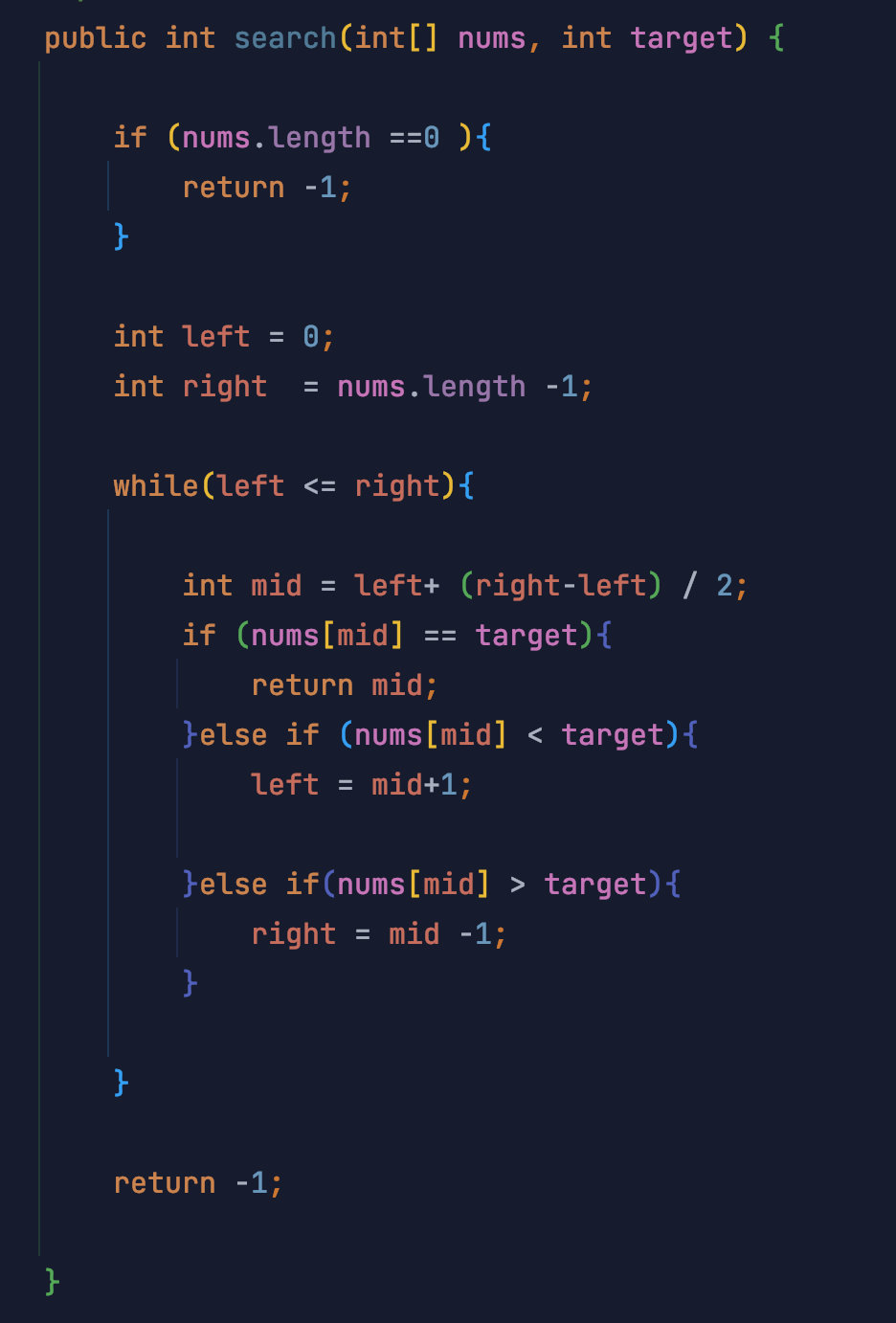
AI automatically generates annotation documents from code

阿里云中mysql数据库被攻击了,最终数据找回来了

1123. 最深叶节点的最近公共祖先
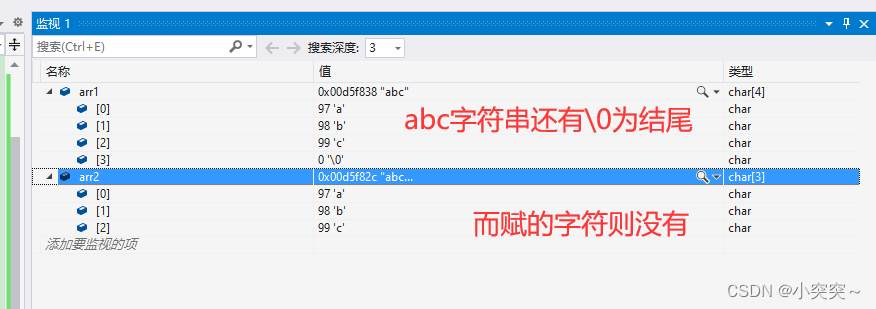
c语言—数组
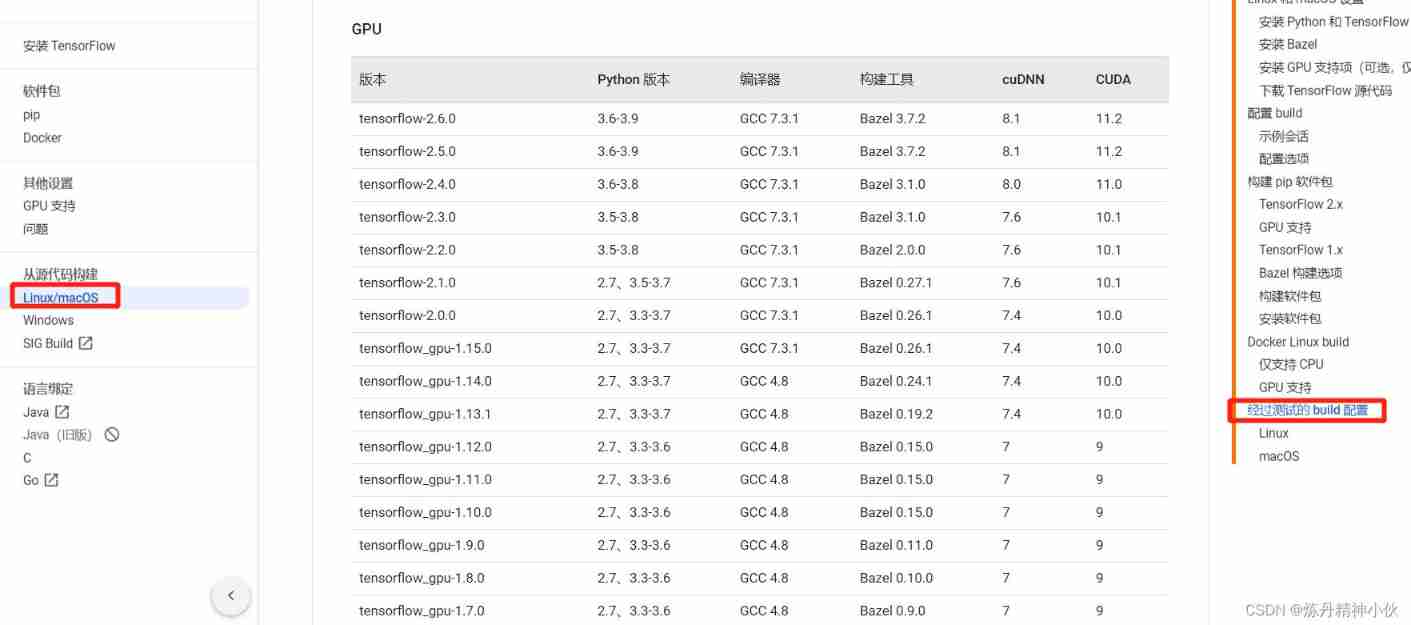
Tensorflow GPU installation
随机推荐
golang中的Mutex原理解析
2022 Google CTF SEGFAULT LABYRINTH wp
Installation of torch and torch vision in pytorch
负载均衡性能参数如何测评?
405 method not allowed appears when the third party jumps to the website
golang中的WaitGroup实现原理
Install Firefox browser on raspberry pie /arm device
Meet in the middle
让我们,从头到尾,通透网络I/O模型
Case development of landlord fighting game
从零开始匹配vim(0)——vimscript 简介
Vocabulary in Data Book
实现mysql与ES的增量数据同步
分享一个通用的so动态库的编译方法
一起看看matlab工具箱内部是如何实现BP神经网络的
What does security capability mean? What are the protection capabilities of different levels of ISO?
1123. 最深叶节点的最近公共祖先
What are the differences between Oracle Linux and CentOS?
How to evaluate load balancing performance parameters?
Yunna | work order management measures, how to carry out work order management